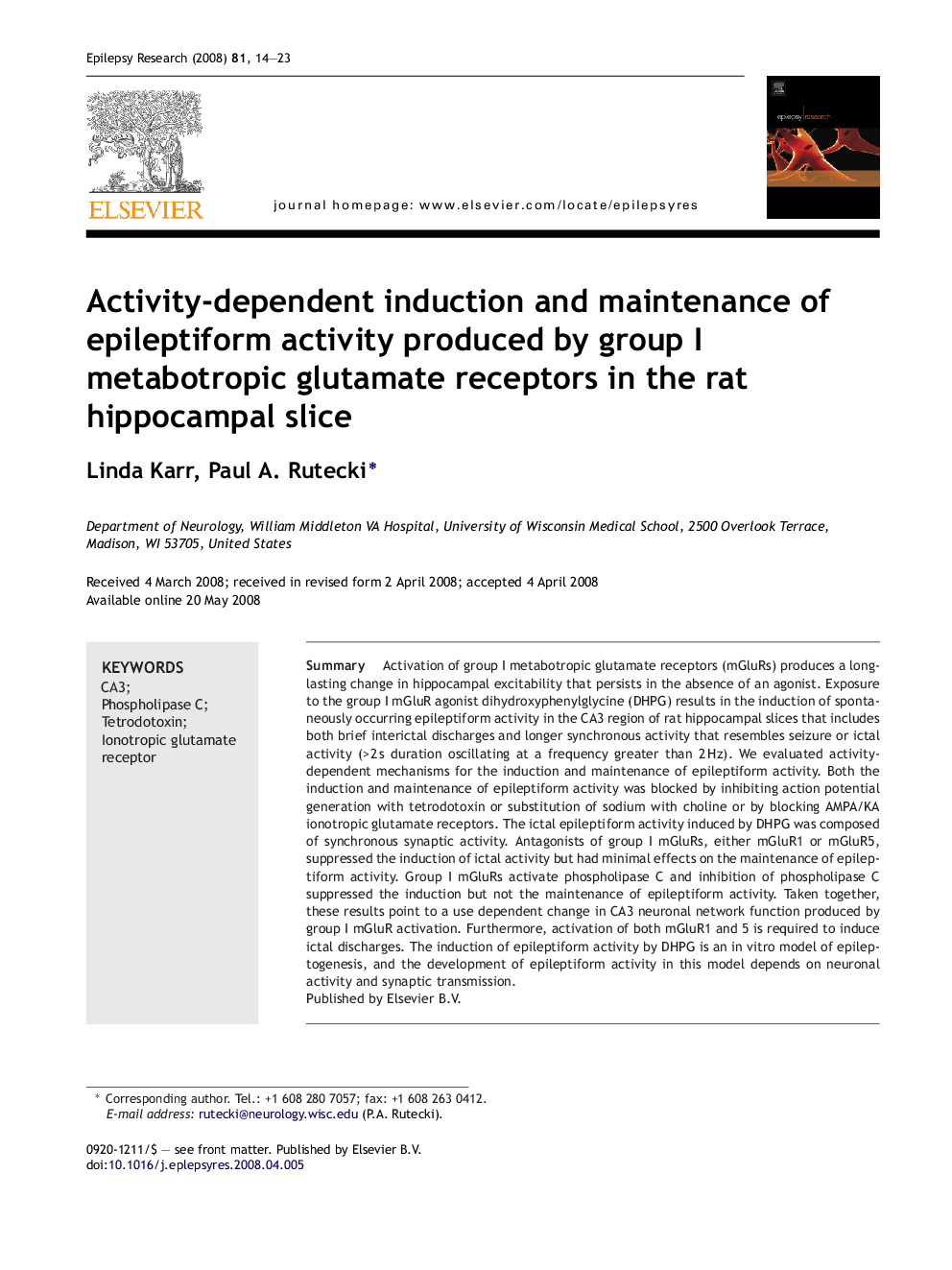| Article ID | Journal | Published Year | Pages | File Type |
|---|---|---|---|---|
| 3052839 | Epilepsy Research | 2008 | 10 Pages |
SummaryActivation of group I metabotropic glutamate receptors (mGluRs) produces a long-lasting change in hippocampal excitability that persists in the absence of an agonist. Exposure to the group I mGluR agonist dihydroxyphenylglycine (DHPG) results in the induction of spontaneously occurring epileptiform activity in the CA3 region of rat hippocampal slices that includes both brief interictal discharges and longer synchronous activity that resembles seizure or ictal activity (>2 s duration oscillating at a frequency greater than 2 Hz). We evaluated activity-dependent mechanisms for the induction and maintenance of epileptiform activity. Both the induction and maintenance of epileptiform activity was blocked by inhibiting action potential generation with tetrodotoxin or substitution of sodium with choline or by blocking AMPA/KA ionotropic glutamate receptors. The ictal epileptiform activity induced by DHPG was composed of synchronous synaptic activity. Antagonists of group I mGluRs, either mGluR1 or mGluR5, suppressed the induction of ictal activity but had minimal effects on the maintenance of epileptiform activity. Group I mGluRs activate phospholipase C and inhibition of phospholipase C suppressed the induction but not the maintenance of epileptiform activity. Taken together, these results point to a use dependent change in CA3 neuronal network function produced by group I mGluR activation. Furthermore, activation of both mGluR1 and 5 is required to induce ictal discharges. The induction of epileptiform activity by DHPG is an in vitro model of epileptogenesis, and the development of epileptiform activity in this model depends on neuronal activity and synaptic transmission.
